Total Knee Replacement – day of surgery
- Home
- Services
- Orthopaedics
- Knowledge Hub
- Total Knee Replacement – day of surgery
Total Knee Replacement, also known as arthroplasty, is a surgical procedure to replace damaged cartilage and bone with artificial implants.
The operation normally takes 1-2 hours and is clinically effective for restoring joint function, relieving pain and improving quality of life. Knee replacement is commonly recommended in severe arthritis where the joint cartilage has worn away, and the bones are rubbing against each other.
Before Surgery
On the day of surgery, the process will be fully explained once more with the opportunity to ask any questions before you sign a consent form. Having observed a fasting period, an anaesthetist may visit you in your room to explain the type of anaesthetic that will be used and the procedure involved. Knee replacement surgery is usually performed under a general anaesthetic or with a spinal anaesthetic, which numbs you from the injection site down. This can sometimes be combined with injections of local anaesthetic.
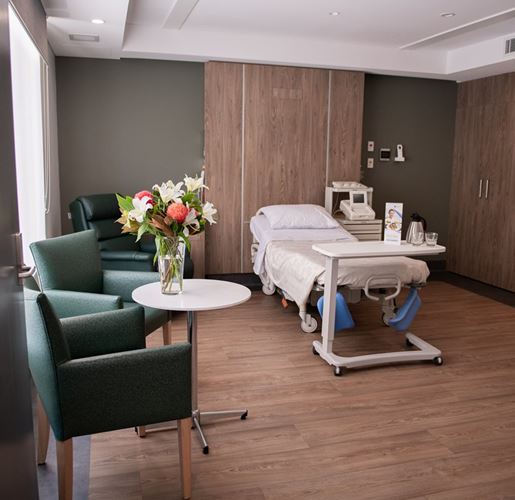
During Surgery
Once the anaesthetic has been effective, the operation will begin.
Incision
An incision is made down the front of the knee and the leg is manipulated during surgery to allow for access to the knee joint.
Bone removal
The surgeon can now carefully remove any damaged or diseased surfaces from the knee joint, reshaping the bone so that the prosthetic joint is sitting precisely in the correct position. This can be achieved with manual instruments, Patient Specific Guides, Computer Navigation and Robotics. Each technique has advantages and disadvantages, without any technique showing a superior patient outcome or function. The choice of surgical technique should be discussed with your surgeon.
Implant attachment
The metal implant is attached to the bone using surgical cement. The surface of the upper bone (femur) is replaced with a rounded metal component that imitates the curve of the natural bone. The surface of the lower bone (tibia) is replaced with a flat metal component. A small plastic piece is inserted between the tibia and the femur in place of natural cartilage, to allow for a smooth gliding movement that your normal knee joint would ordinarily perform. The underside of the patella (kneecap) might also be replaced with a plastic implant. Once everything is in place, the leg is flexed and extended to test function and stability, and to ensure the components bond together.
Closing the wound
The surgeon will then wash and clean the entire site before closing the wound with stiches. A bandage is applied to keep the area sterile and a drain may be used to remove excess fluid.
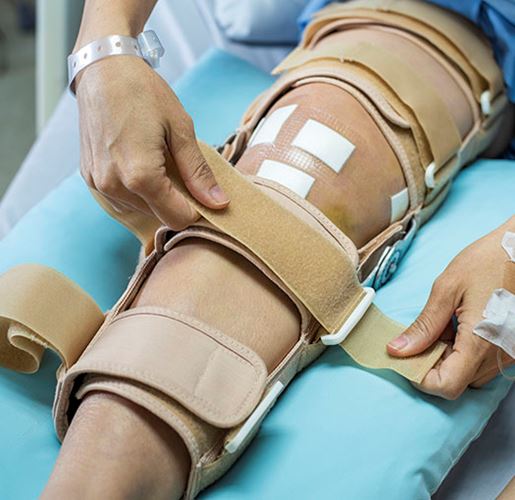
After Surgery
After surgery you will be taken to the recovery room for observation. Once your blood pressure, pulse and breathing have stabilised, you will be moved into a hospital room where you will spend a few days. Here, you will receive blood thinners, antibiotics and compression boots to help prevent any infection or clotting. It is natural to feel some pain after surgery, this is a normal part of the healing process. Pain relief medication and ice packs are available and we will help to make you feel as comfortable as possible.
Foot and ankle movement is encouraged immediately after surgery as this helps improve the blood flow and prevents swelling and clotting. We will ask you to stand and walk within 24 hours of your operation as movement is crucial to regaining muscle strength and avoiding any circulatory or digestive issues. Surgical stockings should be worn at all times for up to six weeks after surgery – they will help control the swelling in your legs and can be removed for bathing.
A physiotherapist will visit you to discuss your post-operative plan which most patients begin the day after surgery. This will include specific exercises to strengthen your leg and restore knee movement so that you are back to walking and daily activities soon after surgery. Before you leave hospital, we will help you navigate normal activities like getting in and out of bed, sitting down and getting back up, and going up and down stairs.
The success of your operation is very much dependent on the rehabilitation process. When you are discharged from hospital, we will give you comprehensive post-operative instructions to follow at home including:
- Regular icing
- Pain medication instructions
- Dietary information and supplements
- Wound management
- Home exercises
- Fall prevention measures
What to look out for at home
Contact your doctor if you experience any of the following:
- Persistent fever
- Redness around the wound site
- Swelling around the incision site
- Increased knee pain
- Any localised chest pain
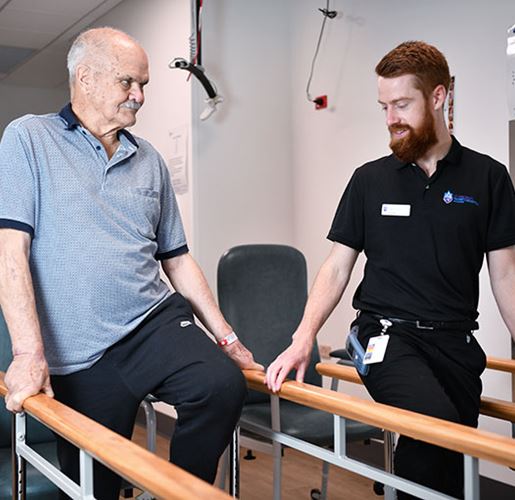
Related
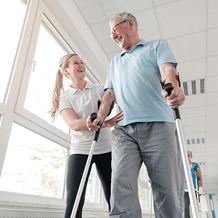
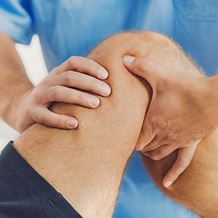
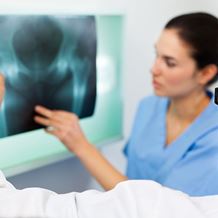
Find a Specialist
Talk to our world-leading orthopaedic specialists about the most suitable treatment options.
Read More